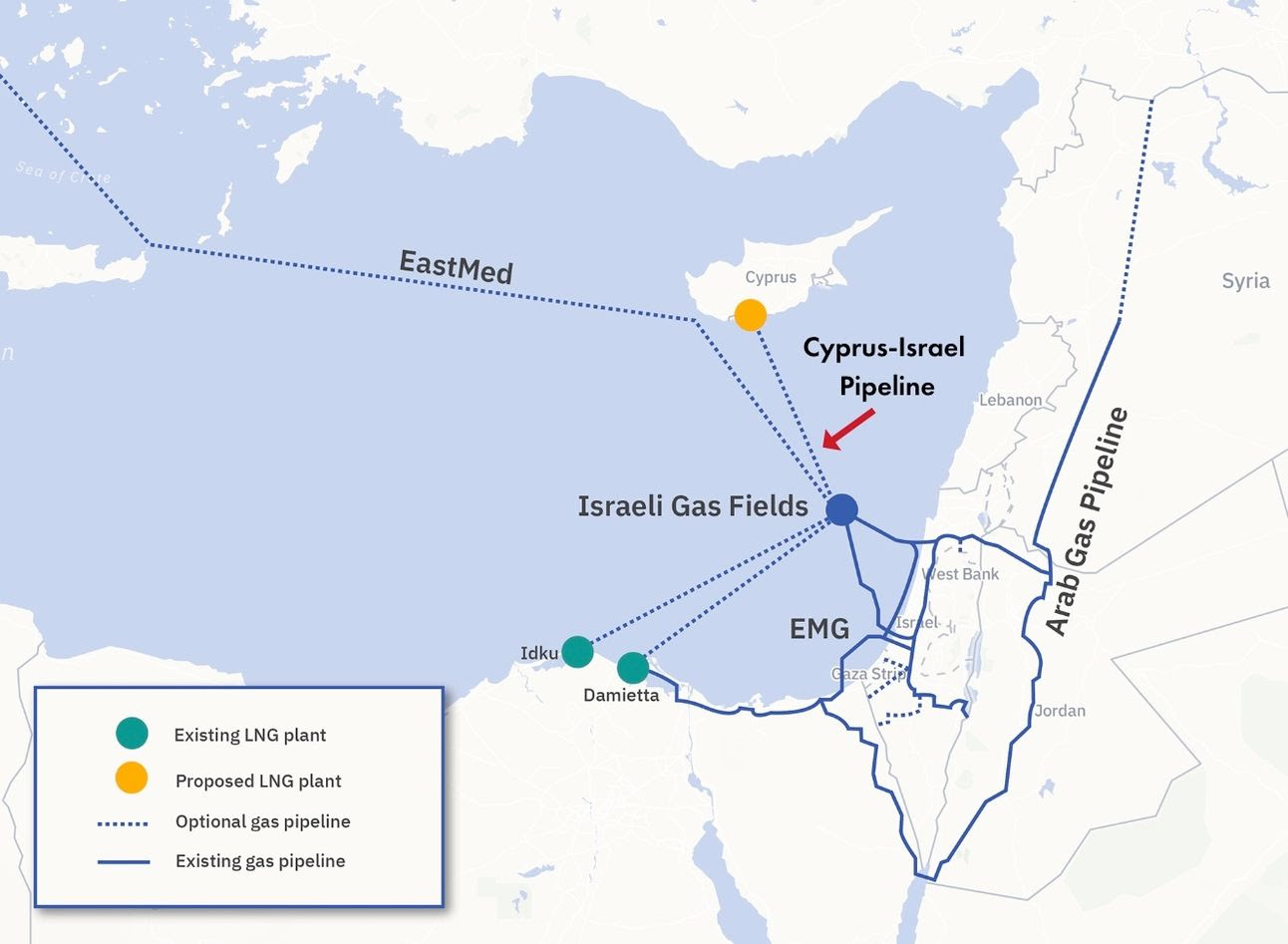Cypriot officials are hoping to develop a pipeline linking Israeli and Cypriot gas in the Mediterranean to Cyprus, with talks scheduled for next month.
It’s a pretty significant pivot from earlier dreams for a vast 2000km ‘EastMed’ pipeline pumping the gas all the way to continental Europe.
Even with Europe’s race to wean itself off Russian gas, EastMed collapsed last year under the weight of technical, commercial, environmental, and geopolitical challenges.
Stay on top of your world from inside your inbox.
Subscribe for free today and receive way much more insights.
Trusted by 129,000+ subscribers
No spam. No noise. Unsubscribe any time.
So, what’s the new plan?
Cyprus proposes a shorter 300km pipeline connecting Israeli / Cypriot gas fields in the Mediterranean to a new terminal in Cyprus, which could then liquify the gas and ship it to global buyers.
This proposal has a few advantages:
- 💸 Cost – it’d be $500M for the pipeline plus $1.5B for the liquefaction plant, compared to EastMed’s $6.5B tag
- ⏰ Time– it’d take 18 months to build the pipeline and 2.5 years in parallel for the plant, versus EastMed’s six years, and
- 👷 Ease – the local seabed is more forgiving than EastMed’s route, which would’ve required one of the world’s longest and deepest underwater pipelines
Intrigue’s take: Some had hoped local gas reserves might help unite the region in an effort to bring its gas to market. But even with Lebanon and Israel resolving a maritime border dispute last year, regional tensions continue to hamper progress.
E.g., France often deploys its navy near European gas exploration off Cyprus, after neighbouring Turkey’s warships blocked drilling there in 2018.
It’s one of several examples suggesting the region’s gas reserves might end up inflaming more tensions than they extinguish.
Also worth noting:
- Israeli gas exports currently reach Europe via Egypt, which converts the gas into LNG.
- Cyprus is not yet producing commercially available gas from its reserves in the Mediterranean. It aims to achieve this by 2027.








